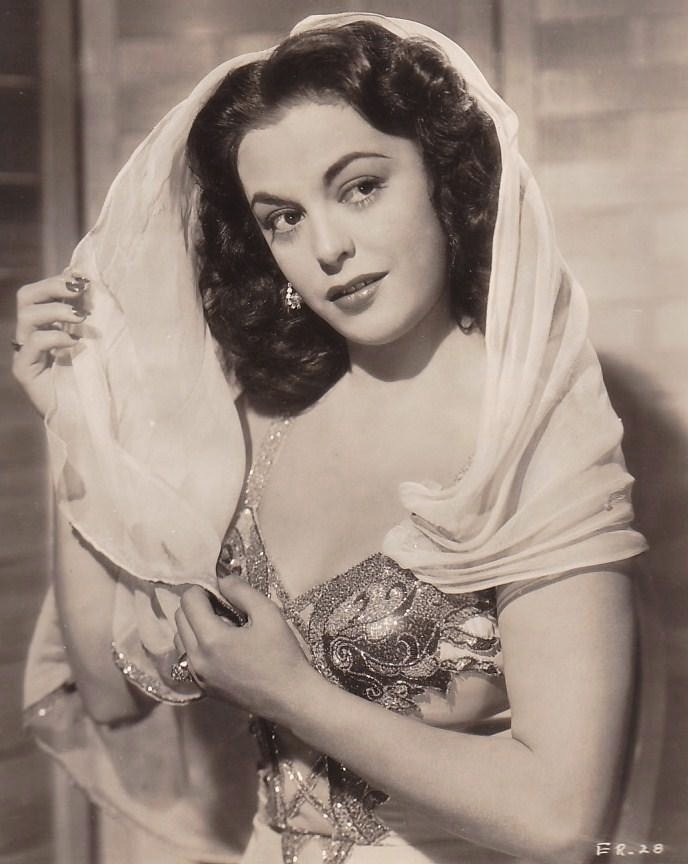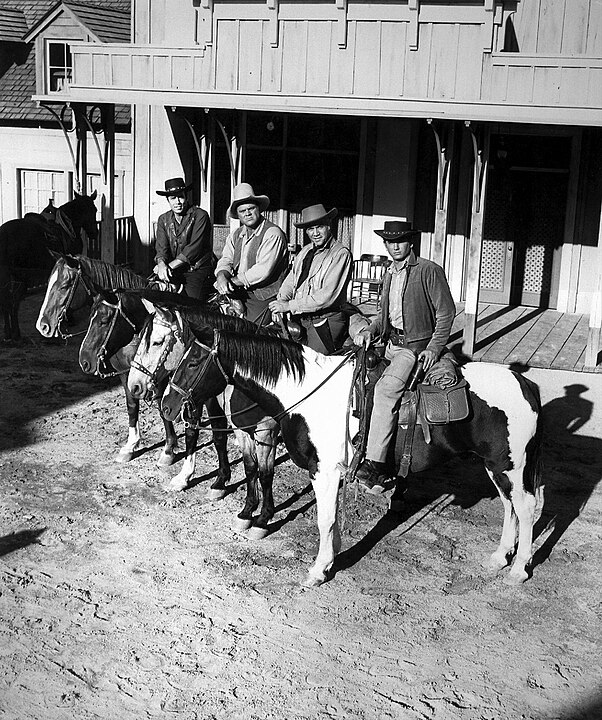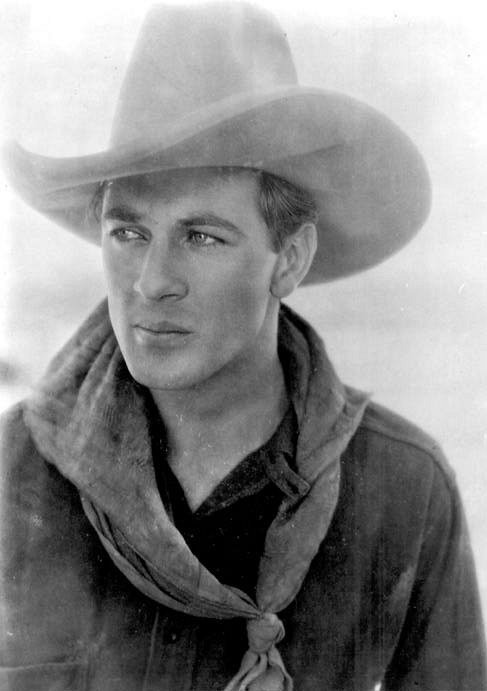You’re about to set off on a journey back to the ’50s, a pivotal decade for Western films. Imagine the galloping horses and the dramatic showdowns, now enhanced by the vibrant colors of Cinemascope and the immersive soundscapes of new audio technologies. This era didn’t just bring technical advancements; it revolutionized storytelling in Westerns, introducing complex characters and themes that mirrored contemporary societal issues. From the legacy of Roy Rogers to the iconic ‘Gunsmoke,’ you’ll discover how these changes laid the groundwork for the genre’s future. Curiosity piqued? Let’s explore what made this decade a golden age for Westerns, shaping the films we cherish today.
Key Takeaways
- 1950s Westerns introduced complex characters, transforming heroes and villains into nuanced individuals.
- Technological advancements like Cinemascope and Trucolor enhanced the cinematic experience of Westerns.
- Themes evolved to reflect contemporary issues, making stories richer and more thoughtful.
- TV shows such as ‘Gunsmoke’ and ‘Bonanza’ influenced Western narratives and broadened the genre’s appeal.
- The era marked a shift towards more immersive storytelling, leveraging improved sound and visual technologies.
The Dawn of Trucolor
Exploring the dawn of Trucolor, you’ll discover it revolutionized Westerns in the ’50s, offering a vibrant new way to experience classics like ‘Sunset In The West’. This two-color film process brought a fresh perspective to the genre, injecting life into the dusty trails and sunsets that define these stories. Imagine watching your favorite cowboy heroes in a color that adds depth and realism to their adventures. That’s the magic Trucolor introduced.
Thanks to restoration efforts led by experts like Bob Furmanek, these iconic films have been given a new lease of life. The restoration process guarantees that fans can enjoy these classics with the quality they deserve. Now available on DVD and Blu-Ray from Kino Lorber, ‘Sunset In The West’ and other Trucolor films can be experienced in high definition, bringing out the vividness that was intended.
The excitement among Western film enthusiasts is palpable. Having access to these restored classics enhances the viewing experience, allowing fans to immerse themselves fully in the colorful world of ’50s Westerns. Trucolor wasn’t just a technological advancement; it was a gateway to a more immersive storytelling experience in the wild, wild West.
Roy Rogers’ Legacy
Diving into Roy Rogers’ legacy, you’ll find that his starring roles in films like ‘Sunset In The West’ (1950) cemented his status as a Western icon. Known for his charismatic screen presence, Roy Rogers became a household name, synonymous with the spirit of the American West. His work alongside actresses like Estelita Rodriguez and Penny Edwards showcased his versatility and charm, making each movie memorable.
Roy Rogers’ films, produced by Republic Pictures, a studio renowned for its dedication to Westerns, contributed greatly to the genre’s popularity. These movies captured the imagination of audiences, blending adventure, romance, and moral tales of good versus evil. ‘Sunset In The West’ (1950), now available on DVD and Blu-Ray from Kino Lorber, allows new generations to experience Rogers’ magnetic performances.
Fans and collectors especially appreciate the meticulous restoration of Roy Rogers’ Trucolor films. This attention to detail highlights his lasting impact on Western films, ensuring that his work continues to inspire and entertain. Roy Rogers’ legacy is not just in the roles he played but in the enduring appeal of Westerns, enchanting hearts across different eras.
Sunset In The West Spotlight
You’ll find “Sunset In The West” fascinating as it highlights the evolution of cinematic techniques in the ’50s. With stars like Roy Rogers leading the charge, the movie showcases iconic roles that have left a lasting impact on Western genre fans. The commitment to restoring and releasing these classics on DVD and Blu-Ray has reignited interest and appreciation for films like this.
Cinematic Techniques Explored
Sunset In The West’s innovative use of Trucolor technology marked a significant evolution in the cinematic techniques of the 1950s Western genre. Directed by William Witney and starring Roy Rogers, this film became a vibrant canvas, showcasing the picturesque landscapes and dramatic action scenes that define Westerns. The restoration and availability of Sunset In The West on DVD and Blu-Ray from Kino Lorber underscore the commitment to preserving these classics for modern audiences. The visual appeal of Trucolor has remained a hot topic among Western film enthusiasts, emphasizing the importance of high-definition releases in preserving the film’s essence. This endeavor ensures that the rich, vivid colors of the West continue to captivate viewers, bridging the past with the present.
Iconic Roles and Stars
In ‘Sunset In The West,’ Roy Rogers, Estelita Rodriguez, and Penny Edwards bring to life iconic Western roles, mesmerizing audiences with their performances. Their portrayal captures the essence of the genre, making the film a classic among Western fans. Directed by William Witney and featuring Foy Willing And The Riders Of The Purple Sage, the movie stands out with its vibrant Trucolor visuals and picturesque landscapes. The recent release of ‘Sunset In The West’ on DVD and Blu-Ray by Kino Lorber has reignited excitement. Thanks to restoration efforts led by experts like Bob Furmanek, this high-definition format guarantees that the legacy of these iconic Western roles continues to enchant new generations, preserving the rich history and unparalleled charm of the genre for fans everywhere.
1950s Westerns Revival
The 1950s marked a significant revival of Western films and TV shows, capturing audiences with tales of rugged individualism and emerging social themes. This era brought a fresh perspective to the genre, blending traditional Western motifs with contemporary issues. TV Westerns, in particular, found a special place in the hearts of viewers. Shows like ‘Gunsmoke,’ ‘Bonanza,’ and ‘Maverick’ weren’t just entertaining; they were a weekly rendezvous with the frontier, right in the comfort of your living room.
These series highlighted the struggle between individualism and collectivism, a theme that resonated deeply with audiences of the time. It wasn’t just about the good guys versus the bad guys anymore; it was about the community, values, and the choices that defined a character. Films such as ‘High Noon,’ ‘Montana,’ and ‘Shane’ went a step further, reflecting the changing social attitudes of the 1950s. They introduced non-traditional heroes, like sheep-herders, who embodied the era’s complexities and nuances. This blend of entertainment and introspection made the ’50s a standout decade for Westerns, both on the big screen and on TV, ensuring their place in the annals of American culture.
Technological Advances
You’ve seen how Westerns revived in the ’50s, but now let’s explore how technology elevated these films. With the advent of Cinemascope, color breakthroughs, and enhanced sound, movies became more vivid and immersive. These advancements transformed the genre, making every scene more engaging and lifelike.
Cinemascope’s Visual Impact
Cinemascope’s introduction in the 1950s dramatically transformed how audiences experienced Western films, offering a panoramic spectacle that brought the vast, untamed landscapes right before their eyes. This innovative widescreen format, with its wider aspect ratio of 2.35:1, allowed for more immersive and expansive imagery on the big screen. By utilizing anamorphic lenses to stretch the image horizontally, Cinemascope created a panoramic view that enveloped audiences in the action. This technological marvel revolutionized the cinema experience, especially for epic genres like Westerns. It captured vast landscapes and thrilling action sequences in stunning detail, elevating the genre’s visual storytelling. The rugged beauty of the frontier was now more compelling and real, drawing audiences deeper into the wild, adventurous world of Westerns.
Color Film Breakthroughs
Following the cinematic revolution brought by widescreen formats, color film breakthroughs further transformed Westerns, making them more vivid and realistic than ever before. With the introduction of Trucolor, a two-color film process, movies like ‘Sunset In The West’ (1950) showcased vibrant visuals that enhanced the storytelling and visual impact of these films. This technological advance allowed for more visually appealing and realistic portrayals of Western landscapes and characters. The vivid hues of sunsets, costumes, and outdoor scenes in Trucolor films contributed notably to the immersive experience. Western movies became more authentic and alluring, marking a notable evolution in the genre. The adoption of color film technology in Westerns not only enhanced the authenticity but also the overall cinematic experience, making these stories more engaging for audiences.
Enhanced Sound Techniques
In the 1950s, Westerns took a significant leap forward with the introduction of enhanced sound techniques, including stereophonic sound, that immersed audiences in the cinematic experience like never before. Technological advances such as magnetic recording and improved microphones allowed for clearer and more dynamic sound quality. This was vital for directors like John Ford, who relied on the power of sound to elevate gunfights, horseback chases, and the bustling life of the Old West. Sound engineers and technicians diligently refined sound mixing and editing, creating a more authentic and engaging auditory backdrop. This era’s advancements in sound technology not only enriched the storytelling but also enhanced the atmosphere, paving the way for more sophisticated sound design in Western films.
Genre Transformation
The 1950s revolutionized the Western genre, introducing more complex themes and characters that deeply influenced its evolution. This era wasn’t just about the traditional Western; it was a period of transformation that reshaped what you expect from cowboy tales. As TV shows like ‘Gunsmoke,’ ‘Bonanza,’ and ‘Maverick’ flourished, they brought the Western into living rooms, making the genre more accessible and influential. These shows weren’t just entertainment; they were shaping the narrative, introducing stories that were more reflective of contemporary issues.
The Cold War, for instance, found its way into Westerns, serving as allegories for the tensions of the time. This wasn’t just cowboys versus outlaws anymore; it was a deeper exploration of individualism versus collectivism, mirroring the larger societal debates. This shift also meant heroes and villains were no longer black and white. Characters became more nuanced, reflecting the complexity of real human nature. You were no longer just rooting for the guy with the white hat; you were compelled to understand motivations, to see shades of gray in the morality of the Wild West. This was a decade where the Western grew up, becoming a richer, more thoughtful genre.
Iconic Films and Faces
How did stars like Gary Cooper and Alan Ladd become the faces of the Western genre’s transformative era in the ’50s? They embodied the spirit of individualism and collectivism in iconic films like ‘High Noon’ and ‘Shane.’ Their performances didn’t just capture the imagination of audiences; they set a benchmark for Western heroes, showcasing courage, moral dilemmas, and the classic standoff against bullies. These themes resonated deeply during a time marked by the Cold War, making their films not just entertainment but a reflection of societal values and fears.
The ’50s also saw Westerns flourish on TV with shows like ‘Gunsmoke,’ ‘Bonanza,’ and ‘Maverick.’ These programs introduced non-traditional heroes and expanded the genre’s reach, ensuring that the Western was a staple in every American home. As these faces filled the screens, they paved the way for future icons like Clint Eastwoods, whose Man With No Name character in the ’60s would challenge and redefine what it meant to be a Western hero. This era wasn’t just about the stars on the screen; it was a period of evolution, where the Western genre grew in depth, complexity, and relevance.
High-Definition Impact
While classic Westerns have long captured our hearts on screen, high-definition releases now guarantee these films look better than ever, preserving their legacy for new generations to enjoy. The leap to high-definition has become a game-changer for the way we experience these timeless tales.
Imagine seeing the dusty trails, the showdowns at high noon, and the sprawling landscapes with a clarity that brings every detail into sharp focus. The restoration of Cinecolor films like ‘Cariboo Trail’ and ‘Canadian Pacific’ in high-definition formats introduces a new level of vibrancy to the colors and textures of the old West.
Here’s what you can now appreciate in these high-definition releases:
- The rich hues of the Western landscapes
- The intricate details on the cowboy attire
- The subtle expressions of iconic actors
- The dynamic motion during thrilling chase scenes
- The meticulous set designs and period-appropriate props
The enhanced picture quality of movies like ‘Sunset In The West’ (1950) on Blu-Ray allows for a more immersive viewing experience. High-definition formats not only enhance the viewer’s experience but also play an important role in preserving Western film history, making sure these cinematic treasures remain accessible and enjoyable for future generations.
Restoration and Preservation
You’ve seen how Westerns from the ’50s have come alive in high definition, but let’s talk about the behind-the-scenes efforts. Facing archival challenges, experts employ modern preservation techniques to guarantee these classics endure for future generations. It’s a journey of safeguarding our cultural heritage, making sure every detail shines through on your screen.
Archival Challenges Faced
In tackling the archival challenges of restoring and preserving Western films from the ’50s, experts confront issues like film deterioration, color fading, and sound quality degradation head-on. They’re dedicated to ensuring these iconic Western films don’t just survive but thrive for future audiences to enjoy.
- Crisp, sun-baked deserts come back to life in vivid color.
- The sharp crack of gunfire in a duel is heard clearly once more.
- Legendary heroes on horseback gallop through scenes with renewed vigor.
- Dusty, old town streets are restored to their bustling, vibrant selves.
- The deep, emotional scores that underpin the drama are revitalized, touching hearts again.
Your beloved Westerns are being carefully handed back their lost glory, ensuring they ride on, eternal in the digital age.
Modern Preservation Techniques
Building on the efforts to restore and preserve Western films from the ’50s, modern preservation techniques employ meticulous digital methods to guarantee these classics endure for future generations. Companies like Kino Lorber are at the forefront, using advanced technology to enhance image quality, ensuring that every dust cloud and showdown in the Wild West is seen in stunning clarity. Restored versions, such as ‘Sunset In The West’, offer audiences a high-definition journey back in time. These efforts maintain the authenticity of the original color schemes and visual aesthetics, allowing viewers to appreciate the historical significance and artistic value of the genre. Now, thanks to modern preservation, you can experience the Wild West as it was meant to be seen, ensuring its legacy lives on.
Future of Classic Westerns
Classic Westerns are set to captivate future generations, thanks to their timeless themes and continued preservation efforts. You’ve seen them on the big screen, but the legacy of the classic Western doesn’t end there. With the rise of TV Westerns, these stories have found a new home, reaching wider audiences and securing their place in the future of entertainment.
The allure of classic Westerns isn’t just in their thrilling shootouts or picturesque landscapes. It’s in the stories they tell—stories of morality, justice, and the rugged individualism that’s synonymous with the American frontier. As safeguarding efforts guarantee these films maintain their glory, the future looks bright for classic Westerns.
Imagine the impact of these elements on future generations:
- The iconic silhouettes of John Wayne and Clint Eastwood riding against a sunset.
- The moral dilemmas faced by characters at the crossroads of civilization and wilderness.
- The revival of classic Westerns through remakes and TV adaptations.
- The continued celebration of traditional American ideals and values.
- The exploration of timeless themes like justice and individualism through new, innovative storytelling.
Classic Westerns stand as a validation to the enduring appeal of good versus evil, making them forever relevant in the hearts of viewers, old and new.
Frequently Asked Questions
Why Were There so Many Westerns in the 50s?
You’re seeing so many Westerns from the ’50s because they mirrored American ideals during the Cold War, celebrating heroes who embodied virtues like bravery. Shows like ‘Gunsmoke’ and ‘Bonanza’ dominated, reflecting the era’s values.
When Was the Golden Age of Westerns?
It was in the 1950s. This was when you’d find classics on TV and in cinemas, starring legends like John Wayne and Clint Eastwood.
When Did Westerns Lose Their Popularity?
Westerns lost their popularity in the 1960s, and by the 1980s, they’d nearly vanished. Changing tastes and competition from new TV genres overshadowed them, making it hard for the classic Western to stay relevant.
How Have Western Movies Changed Over Time?
Western movies have evolved significantly, now exploring intricate themes and diverse characters. You’ll notice they’ve shifted from simple good vs. evil tales to stories reflecting deeper societal issues and more nuanced moral landscapes.
Conclusion
As you’ve journeyed through the evolution of Westerns in the ’50s, you’ve seen how technology and storytelling intertwined, bringing new life to the genre. You’ve witnessed the legacy of Roy Rogers and iconic films that have stood the test of time. With advancements in high-definition and preservation efforts, these classic Westerns are set to inspire future generations. So, saddle up and keep exploring the rich landscapes and compelling stories that Westerns offer. The sunset is just the beginning of more adventures.





